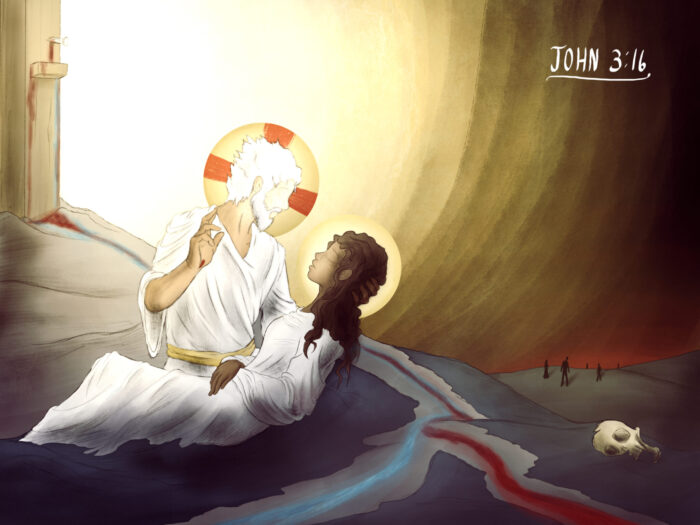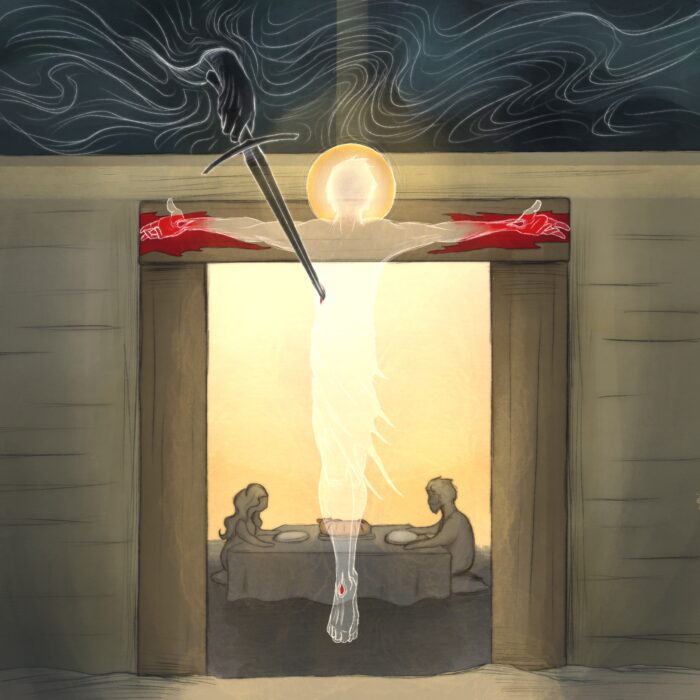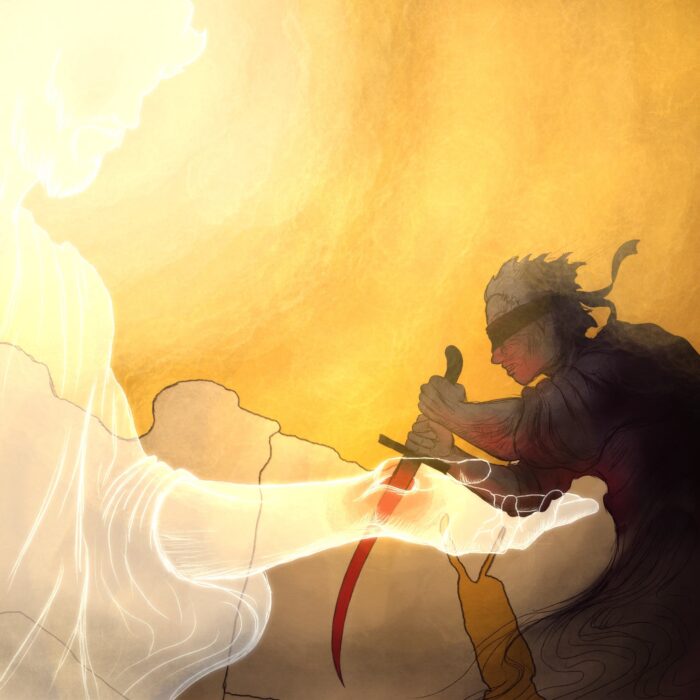Proverbs 30:3-4, “I have not learned wisdom, nor have I knowledge of the Holy One. Who has ascended to heaven and come down?”
John 3:13-15, “No one has ascended into heaven except He who descended from heaven, the Son of Man. And as Moses lifted up the serpent in the wilderness, so must the Son of Man be lifted up, that whoever believes in Him may have eternal life.”
First, notice that in Proverbs 30, Agur laments his inability to know wisdom, and specifically, to know “the Holy One”, ie, YHWH. He does not have knowledge of the Holy One, not the sort he would like. Then in verse 4 we see the words that Jesus quotes in John 3, “who has ascended to heaven and come down?” Taking into account the context of Agur’s desire to know the Holy One, Proverbs 30:4 seems to be implying that, apart from one who ascends to heaven and comes down (understood to be YHWH Himself?)—apart from such an ascent and descent, mankind cannot truly know the Holy One.
This is how Jesus interprets and applies the words in John 3:13, in which He presents Himself as the One whom Agur hypothetically anticipated, the One who has ascended to heaven (indeed, who has eternally dwelt in the bosom of the Father, 1:18) and descended and so is able to make the “Holy One” known. So, when we read John 3:13 in light of Christ’s quotation of Proverbs 3:3-4, we realize that this entire section of John is about the revelation of God, the making known of the Holy One. And that is awesome to consider because of what comes next. How does the One who descended from heaven and so is uniquely qualified to make God known, how does He carry out this communication? How is the Holy One made known?
“And as Moses lifted up the serpent in the wilderness, so must the Son of Man be lifted up, that whoever believes in Him may have eternal life.”
The Son of Man, the one who alone descends from heaven and so makes the Holy One known, the Son of Man—in His revelatory role—must be lifted up as the serpent was lifted up, He must be lifted up as the image and embodiment of curse. Why? Why must this happen? So that whoever (looks upon and) believes in Him may have eternal life….and what is eternal life? In the revelatory context that Jesus’ quotation of Proverbs 30 has established, it should be no surprise for us to discover that, for John, eternal life is knowledge of God (John 17:3)….the knowledge of the Holy One for which Agur longed, the knowledge that Christ has come to impart (John 1:18), the knowledge that Christ Himself is (John 1:4, 12:45-46, 14:6,9), this intimate, affectional knowledge of the living God is eternal life. And John 14 tells us that we cannot have such knowledge of the Holy One apart from the Beloved, God-revealing Son being lifted up as the image of our curse on the cross.
God cannot be known apart from His self-disclosure in the Son (unfolded to us by the Spirit, John 16:14), and this self-disclosure is not complete (and saving) until it culminates in the Son’s being lifted up as the Cursed One in our place on the cross….this “must” happen if we are to know the Holy One and so have eternal life.
The implications here are truly—without hyperbole—infinite. At the cross of Christ, we can say what Agur could not say. There, at the foot of the cross upon which the eternal Son—in His humanity—is lifted up in love and obedience as the tortured and crushed image of our curse….there, as we lift our eyes to the image and embodiment of our curse, borne in the body of our Lord, there we can say, “Now I have learned wisdom (1 Cor.1:24); now I have knowledge of the Holy One(1 John 5:20)….now I know His Name and His Son’s name (John 14:9, 17:11)….and so have eternal life (John 17:3).”
Hallowed be His Name.




